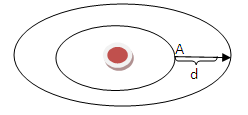-
Paper Information
- Next Paper
- Paper Submission
-
Journal Information
- About This Journal
- Editorial Board
- Current Issue
- Archive
- Author Guidelines
- Contact Us
International Journal of Theoretical and Mathematical Physics
p-ISSN: 2167-6844 e-ISSN: 2167-6852
2015; 5(2): 23-24
doi:10.5923/j.ijtmp.20150502.01
Time – Energy Relationship an Attempt to Reinvent the Wheel
Yasir S. Abd Karkosh
Ministry of Health, Specialist Psychiatrist, Director of the Department of Psychiatry in al Hilla Teaching Hospital in Babylon City, Iraq
Correspondence to: Yasir S. Abd Karkosh, Ministry of Health, Specialist Psychiatrist, Director of the Department of Psychiatry in al Hilla Teaching Hospital in Babylon City, Iraq.
| Email: |  |
Copyright © 2015 Scientific & Academic Publishing. All Rights Reserved.
Could time be another manifestation among many other manifestations of energy like mass, motion and electricity, if the answer is yes. can we convert time to energy and vice versa. Similarly just as Einstein's equation  equalize mass to energy, time is equalized to energy in Planck's equation.
equalize mass to energy, time is equalized to energy in Planck's equation.
Keywords: Time, Energy, Planck's equation
Cite this paper: Yasir S. Abd Karkosh, Time – Energy Relationship an Attempt to Reinvent the Wheel, International Journal of Theoretical and Mathematical Physics, Vol. 5 No. 2, 2015, pp. 23-24. doi: 10.5923/j.ijtmp.20150502.01.
1. Suppose We are doing the Following Experiment
- Let A be a beam of light inside an atom .the atom and the beam of light inside is moving with V velocity relative to static observer B, d is the distance traveled by A inside the atom , while
 is the time elapsed as A travelled along d
is the time elapsed as A travelled along d 
 Where E equal to energy, h is Planck constant, f is the wave frequency
Where E equal to energy, h is Planck constant, f is the wave frequency | (1) |
 is the time period of waveLet
is the time period of waveLet  be the energy Relative to B frame of reference
be the energy Relative to B frame of reference  | (2) |
 is the time period of wave according to BSince
is the time period of wave according to BSince 
 | (3) |
 , is equal to the following
, is equal to the following By substituting equation c into 3
By substituting equation c into 3 | (4) |
 | (5) |
 to
to  , energy will also change from
, energy will also change from  to
to  .By the same logic we can wonder whether losing or adding energy could lead to change in time, and that is what equation 7 predict as time
.By the same logic we can wonder whether losing or adding energy could lead to change in time, and that is what equation 7 predict as time  is inversely proportional to energy
is inversely proportional to energy  .The usual mental habit of relating the time period of wave to its energy can be broken if we look to it from another perspective.Let d =
.The usual mental habit of relating the time period of wave to its energy can be broken if we look to it from another perspective.Let d =  , where
, where  is the wave length of beam ASince
is the wave length of beam ASince | (6) |
 | (7) |
 Where,
Where,  is the wave length, h is Planck’s constant, P is the momentum Although counterintuitive, mathematical equations depict this possibility.
is the wave length, h is Planck’s constant, P is the momentum Although counterintuitive, mathematical equations depict this possibility.2. Conclusions
- Our experiment tells us that time in general is equivalent to certain amount of energy and that time and energy are related to each other by the same mathematical formula that relates the time period and wave energy, Planck's equation.According to equation 7 we can say that the energy contained in one minute is less than that contained in one second.Metaphorically speaking, one can look to the matter from another perspective as follow, just similar to what joule had done when he invented his big apparatus by which he found the heat equivalent of energy, the same can be applied in our case except that max Planck has used, instead of joules giant machine, a tinny electromagnetic wave to find the time equivalent of energy.Scientist didn’t yet find a natural phenomenon that relates time to energy except in electromagnetic waves, so until this happens perhaps Planck's equation is providing the answer for a future dilemma just like what Einstein equation did when it explained where did the lost mass had gone after a nuclear fission.
 Abstract
Abstract Reference
Reference Full-Text PDF
Full-Text PDF Full-text HTML
Full-text HTML